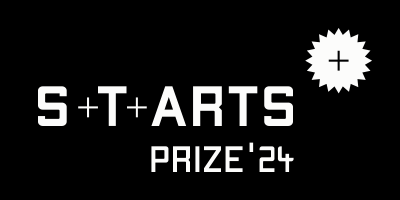2023 S+T+ARTS Prize Jury
All submissions are judged by a jury to decide on the two prize-winning projects and up to ten honorary mentions.
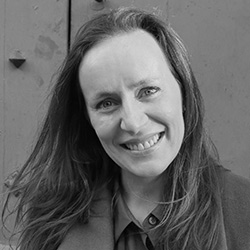
Mónica Bello (ES/CH) is a Spanish curator and art historian. In her curatorial practice, she focuses on the crossovers between disciplines. Since 2015 she is the Curator and Head of Arts at CERN at the European Organization for Nuclear Research in Geneva. At CERN she designs and directs the laboratory’s art strategy and coordinates the art programs: the artistic residencies, the art commissions, and the exhibitions. She is currently working in the exhibition Exploring the Unknown, the opening art exhibition for the CERN Science Gateway, with works by the artists Julius von Bismarck, Chloé Delarue, Ryoji Ikeda, and Yunchul Kim. Recently she curated the Icelandic Pavilion at the 59th Venice Biennale represented by the artist Sigurður Guðjónsson. In October 2022 she curated the exhibition Transits at the Reykjavík Art Museum, a solo exhibition of Guðjónsson. In 2018 she curated Quàntica/Broken Symmetries, a touring exhibition of works of Arts at CERN. In the same year she was invited to be the Guest Curator of the prestigious Audemars Piguet Art Commission, presented at Art Basel. Prior to her arrival in Switzerland she held the position of Artistic Director of VIDA (2010-2015) at Fundación Telefónica, Madrid, a pioneering award that fostered cross-cultural expressions around the notion of life. She initiated and ran (2007-2010) the Department of Education at Laboral Centro de Arte, Gijón (Spain). She curated exhibitions, events, and publications internationally supporting creators and researchers from different fields and backgrounds. As an internationally recognized figure within art and science networks, Bello is a regular speaker at conferences and participates in selection committees, advisory boards, and mentorship programs.
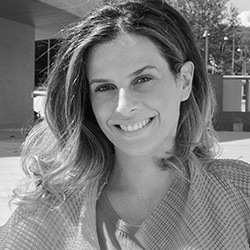
Francesca Bria (IT) is the President of the Italian National Innovation Fund and a Board Member of the Italian public media company RAI. She is Honorary Professor in the Institute for Innovation and Public Purpose at UCL in London and she is part of the High-level Roundtable for the New European Bauhaus set up by the EC President Ursula von der Leyen to accelerate the EU Green Deal. She is the former Chief Digital Technology and Innovation Officer for the City of Barcelona in Spain. In this role, she was leading the smart city Agenda and she was one of the founders of the United Nations Cities Coalition for Digital Rights. Francesca Bria is leading the EU flagship DECODE project on data sovereignty in Europe, and is a Senior Adviser on the EC programme STARTS (Innovation at the nexus of Science, Technology and the Arts). Francesca has a PhD in Innovation and Entrepreneurship from Imperial College, London and MSc on Digital Economy from University of London, Birbeck. As Senior Programme Lead at Nesta, the UK Innovation Agency, she has led the EU D-CENT project, the biggest European Project on digital democracy and crypto platforms. She also led the Digital Social Innovation EU project, advising the EU on digital innovation policies and mission-driven innovation. She has been teaching in several universities in the UK and Italy and she has advised Governments, public and private organizations on technology and innovation policy, and its socio-economic, geopolitical and environmental impact. Francesca has been nominated Commander of the Order of Merit of the Italian Republic. She has been listed in the top 50 Women in Tech by Forbes Magazine. Francesca is also Culture Persons of the Year 2020 according to the newspaper Frankfurter Allgemeine Zeitung (FAZ), and is in the World’s top 20 most influential people in digital government by Apolitical.

Bernd Fesel (DE) has experience in the Cultural and Creative Sectors and Industries for over 30 years and is currently the Interim Chief Executive Officer of the forthcoming EIT Culture & Creativity, a new Innovation Community supported by the European Institute of Innovation and Technology that brings together 50 partners from 20 countries to create new innovation opportunities for Europe’s 3 Mio. cultural and creative players. Prior to this role Bernd has been the director of the European Creative Business Network (ECBN), a not-for-profit organization of over 170 members from 44 countries that supports and develops the cultural and creative industries in Europe. Before that, he was a serial entrepreneur within the CCSI sector, held the role of vice director of the European Capital of Culture in the Ruhr Region and was senior advisor to the legacy institute of RUHR.2010 til 2018: the european centre for creative economy in Dortmund. He played a key role in EU initiatives such as like JRC-Creative City Monitor, Voices for Culture program and ENTACT and setup a European Research Alliance on Spillover-Effects of Culture and Creativity. Since 1990 Bernd is founder of startups, architect of novel public organisations, inspirator for programs and policies for CCSI, friend and connector of acclaimed artists as well as influencer and publisher.

Jun Inada (JP) is Head of Department at RICOH Co.LTD Tokyo, Japan. Experienced Director Corporate Planning with a demonstrated history of working in the information technology and services industry. Tackling organizational culture change and new vision/business creation in large companies with strong ambition. Professional experience: Associate, RICOH Co.LTD, Tokyo (2005-2009): Japan domestic Field Sales, Trading operation, Supply Chain Management. Manager, RICOH Europe SCM, Bergen op Zoom (2009-2012): Supply Chain Management in European central warehouse in the Netherlands. Introduce/design Oracle system as new SCM operational core system. Specialist, RICOH Europe PLC, London (2012-2015): European headquarter budget planning, Operating company business support, developing emerging market in UK where European headquarter located. Board of Director, RICOH UK PLC, London (2015-2017): Japanese client business development, new business development. Head of Department, RICOH Co.LTD, Tokyo (2017-current): Engaging with CEO direct project to generate talent and value to make the creative business pillar.

Univ. Prof. Dr. Meinhard Lukas (AT) has held the office of Rector at the JKU since October 2015. He is a Professor of Civil Law and has held numerous academic positions, including Dean of the Faculty of Law (2011 to 2015). Furthermore, Meinhard Lukas is an expert at the Ministry of Justice for legislative procedures, an Austrian representative in the United Nations Commission on International Trade Law (UNCITRAL), an Advisory Board member of “Linz Cultural Development Plan New” and a corresponding member of the Medical Society for Upper Austria. During his term as Rector at the JKU, Meinhard Lukas has advocated pursuing stronger dialogue between art and technology by partnering with Ars Electronica to support the Ars Electronica Festival and to initiate the Festival University, as well as by promoting the development of the Art x Science School for Transformation, an interuniversity program offered jointly by the University of Applied Arts Vienna and the JKU.
2023 S+T+ARTS Prize Advisors
The advisors are renowned international consultants with expertise in this field. They recommend projects and encourage a wide range of potential participants to submit proposals. In addition, they ensure a balance in terms of gender and geographical origin of the participants.
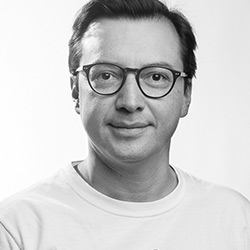
Andrés Burbano (CO) is Professor in the Arts and Humanities School at the Open University of Catalunya (Barcelona, Spain) and Visiting Lecturer at Donau-Universität (Krems, Austria). He holds a Ph.D. in Media Arts and Technology from the University of California at Santa Barbara (California, EEUU) and has developed most of his academic career in the School of Architecture and Design at Universidad de los Andes (Bogotá, Colombia). Burbano works as a researcher, curator, and interdisciplinary artist. His research projects focus on media history and media archaeology in Latin America and the Global South, 3D modelling of archaeological sites, and computational technologies’ historical and cultural impact. Burbano has been appointed as ACM SIGGRAPH 2024 Chair. His book Different Engines: Media Technologies from Latin America has been published in 2023 by Routledge as part of the Design, Technology and Society book series.
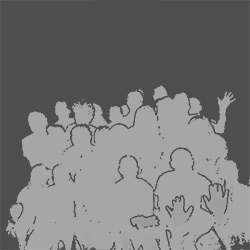
Hackers & Designers (NL) is a non-profit workshop initiative with an emphasis on technology, design and art, and cross-disciplinary exchange. H&D activities address ‘makers’, as well as ‘users’ to discuss topics related to reliance on technology in our daily physical and digital, private and professional lives. By developing hands-on and low-barrier formats of learning about, and experimenting with hardware and software, H&D stimulates collaboration across disciplines, technological literacy, and different levels of expertise. H&D activities go hand in hand with building actual tools, which are documented and published so that they can be used, appropriated and altered by others. With tools we mean software and/or hardware constructions, as well as pedagogical, organizational and collaborative tools that enable critical engagement with and through technology – in practice.
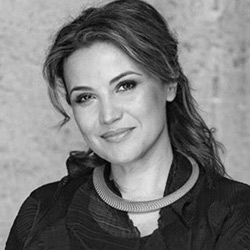
Lydia Kallipoliti (GR) is an architect, engineer, and scholar whose research focuses on the intersections of architecture, technology, and environmental politics. She is a tenured Associate Professor at the Cooper Union in New York. Her work has been published and exhibited widely including the Venice Biennial, the Istanbul Design Biennial, the Storefront for Art and Architecture in New York and the London Design Museum. She is the author of the awarded book The Architecture of Closed Worlds, Or, What is the Power of Shit (Lars Muller Publishers, 2018), and the editor of EcoRedux, a special issue of Architectural Design magazine (AD, 2010). She is the principal of ANAcycle thinktank, which has been named a leading innovator in sustainable design in Build’s 2019 and 2020 awards.
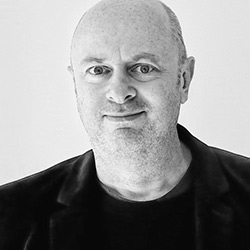
Jon McCormack (AU) is a media artist and researcher based in Melbourne, Australia. He is currently a research Professor and director of Monash University’s SensiLab, a creative technologies research laboratory that brings together artists, designers, scientists, and technologists in trans-disciplinary collaboration. McCormack’s own creative practice encompasses generative systems, human-machine creativity, and creative Artificial Intelligence. He is the recipient of over 18 awards for both artistic innovation and technical research, including the Eureka Prize for Innovation in Computer Science and the Lumen Prize for Digital Art.

Kyuseung Keith Noh (KR) is Team Lead & Creative director of ZER01NE, which is creative talent platform of Hyundai Motor Group. ZER01NE’s mission is Human-centered Innovation beyond typical Open Innovation of other corporates. ZER01NE is nurturing creators and startups who can challenge and solve the problem of future society through collaboration of ART, TECH and BIZ. Since 2018, over 120 creators and 80 startups were supported and funded. Lastly he is also professional investors and managing partner of ZER01NE Fund.

Katja Schechtner (AT) is an urban scientist who develops new technologies and shapes innovative policies to keep cities on the move. She currently focuses on a reassessment of the position of nature within urban governance processes with MIT LCAU and dieAngewandte and at the same time, tackles questions of urban policymaking with a particular emphasis on understanding the human perception of – and interaction with – the built environment with MIT senseable city lab. Previously she led innovation and technology programs at OECD in France, the Asian Development Bank in the Philippines and advised the Inter-American Development Bank in Costa Rica and Argentina, the EU Commission, and headed an applied research lab at the Austrian Institute of Technology – all the while holding visiting professorships, lecturer positions and research affiliations globally, e.g. at MIT Media Lab, Paris-Saclay, dieAngewandte, TU Vienna, or HDM Stuttgart.
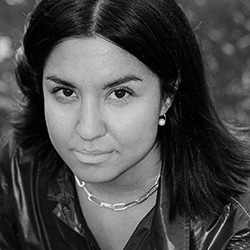
Yasaman Sheri (CA) is a Designer, writer and researcher working at the intersection of technology, science and creative inquiry. Her work investigates novel interfaces using sensing technologies, synthetic biology, simulation and perception systems. She is currently Principal Investigator of Serpentine Gallery’s Synthetic Ecologies Lab.
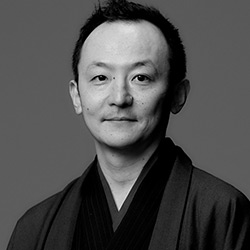
Kei Takeuchi (JP) is the deputy general manager of the brand and innovation design division at the Japanese advertising agency Hakuhodo. He works with clients on brand building and innovation, through “the integration of logic and sensibility” and “co-creation process”. He is also leading the Hakuhodo side of a collaborative project with Ars Electronica.
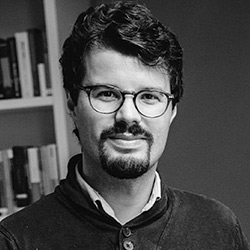
Rodolfo Groenewoud van Vliet (NL) is co-founder of In4Art – an independent Institute for Art-Driven Innovation, est. in 2015. His interests lie in exploring and prototyping possibilities of technologies and the economics which will influence the shorter- and longer-term futures of food, manufacturing, health and biodiversity. Together with his wife and collaborator Lija Groenewoud van Vliet, he invented and practices the Art-Driven Innovation methodology which is currently driving over 75 international experimental programs and projects involving art, science, technology, and industry.

Ksenia Zaytseva (CA/RU) is a data professional with nearly a decade of experience working in industry, research, and cultural heritage domains. She is currently working as a data architect with Electronic Arts, a video game software company. Before transitioning to the industry, she worked in science field with the Canadian Centre for Computational Genomics where she was a part of several nationwide projects dedicated to establishing data infrastructure for performing large-scale distributed analysis of genomic and neuroscience data. Prior to that, she worked with the Austrian Centre for Digital Humanities of the Austrian Academy of Sciences and contributed to numerous interdisciplinary projects at the intersection of technology, humanities, and social sciences.
Technology as a Renewing Force
Statement of the S+T+ARTS Prize’23 Jury (Mónica Bello, Francesca Bria, Bernd Fesel, Jun Inada, Meinhard Lukas)
The jury has carefully selected a total of 12 projects, including two Grand Prizes and ten Honorary Mentions. These projects showcase both the potential and the desire to create an impact, with a particular focus on addressing pressing issues such as ecological, technological, socioeconomic, and cultural challenges that are being faced globally today. The jury had the challenging task of reviewing a wide range of diverse proposals, which covered topics ranging from planetary wellbeing, health awareness and care, environmental health, to mental health in the post-pandemic era.
One notable theme in the awarded projects was the engagement and empathy towards other species and living entities. Detailed proposals were presented to intervene in endangered contexts or employ mechanisms and methodologies that promote rewilding. Given the current ecological collapse, interdisciplinary collaborations are essential, and art plays a fundamental role in this endeavor. Artists have brought forth issues raised by advanced computing technologies, as has become common in the S+T+ARTS Prize. The selected proposals also address the role of information systems in shaping an open and egalitarian society, covering themes such as post-truth, freedom of movement, digital life, identities, surveillance, and critique of the opacity of digital systems. Notably, AI and the latest AI systems and software are considered, reflecting the evolving technological landscape, while blockchain also finds representation.
Unique to this occasion, there is an empathic understanding of both the digital and physical realms. Some proposed ideas present technology as a renewing force, simulating undisturbed forests or collective identities to revive ancestral knowledge that has been obscured since industrial colonization. The proposals shed light on the material and digital transactions taking place globally, which impact us and other species. They express the inherent tensions of a techno-capitalist society and suggest a move towards a more caring era under renewed multispecies landscapes.
Knowledge, its transfer, production, and utilization, lie at the core of S+T+ARTS. The jury thoroughly reviewed the proposals with these aspects in mind, including the processes of obtaining, processing, and analyzing information to define policies in relation to the ecologies of knowledge. During the jury deliberations, the artists’ drives and motivations to understand the processes behind knowledge production became apparent. Artists in this edition were particularly concerned with aligning their creative processes with sustainable and ethical goals. The innovative input demonstrated the ethical sensibility characteristic of their practice. The methodologies employed by the artists are reflective of practices observed in the field of art, science, and technology over the past decades. These methodologies include accuracy in facts, functionality, investment in the medium, interest in the materiality and its implications, process-oriented approaches, fieldwork orientation, collective authorship, and community-oriented work. If STARTS is committed to cultural and societal innovation, it should respond to these premises and intervene purposefully. All the projects awarded this year embody these principles, proposing improved ways to address the present and to envision sustainable futures while considering the diversity of scales, and different contexts and locations. The responsible and ethical response to these circumstances has been remarkably summarized in this year’s awards.
The S+T+ARTS Prize is annually awarded in two categories: artistic exploration and innovative collaborations between disciplines or communities. The latter category emphasizes the interaction between artists and engineering, natural sciences, or social sciences. During the jury meeting, it became evident that the hybrid nature of the proposals expands the meaning of “collaboration.” Collaboration has been a term challenged by the practice of art and science. Artists spend time in laboratories, bringing scientific and technical input into their studios, and engaging in unconventional propositions and experiments. This is evident in the project awarded with the Grand Prize for Artistic Exploration: Alexandra Daisy Ginsberg’s Pollinator Pathmaker is an interspecies artwork that responds to the ecological damage caused by humans. Through art, it fosters empathy and agency in our relationship with other species, particularly pollinators, aiming to provoke a caring response. This unique artwork contributes to a more diverse and comprehensive understanding of our environment as an ecology of knowledge.
The Grand Prize for Innovative Collaboration aims to emphasize the importance of cross-sectorial and trans-disciplinary collaborations. Photographer and artist Richard Mosse embarked on a long-term project in the Amazon rainforest, driven by concerns about climate change and the future of the planet. In Broken Spectre Mosse developed a series of technologies, including multispectral cameras, ultraviolet botanical studies, and heat-sensitive analogue films affected by the conditions of fires and burning in the forest. These technologies, along with GIS imaging technology for aerial maps, were developed with the support of scientists and technologists. However, it is crucial to recognize the trust and involvement gained from the Hutakara Yanomami people and other communities fighting for the survival of their habitats.
Artists have long collaborated with scientists and technologists. Collaboration takes various forms, and one of its purposes is to bring urgency into action, which can only be visualized and made tangible through art. The field of art and science has shown the benefits of bypassing conventional conventions for innovation. In S+T+Arts, arts merge with science, becoming part of a symbiotic medium. The jury awarded the innovative appeal where a collaboration between art and science takes place.
S+T+ARTS Prize ’23
Grand Prize – Innovative Collaboration
Awarded for innovative collaboration between industry or technology and the arts (and the cultural and creative sectors in general) that opens new pathways for innovation.
Broken Spectre, Richard Moss
The deforestation of the Amazon is the global symbol of 21st century of the erasure of ecosystems and its seemingly ever increasing speed-a bleak indication of the human-made roots for the world failing to fulfil the Paris Agreement by limiting global warming to below 1.5 °C. While this is common knowledge today, there is no common action or change taking place. What is needed to save the Amazon and to save the world? More research? More data? More reports? More warnings? What do we as a global collective need to see to implement change? We all feel the need for a new way of seeing, viewing, and then acting upon environmental catastrophes: Broken Spectre offers an opportunity for each and everyone to see with refreshed eyes, and to understand with perspectives shifted and with novel layers of previously hidden dimensions of the Amazon deforestation. Richard Mosse’s creation is as much an artwork as a technological masterpiece, almost like a film. He calls it a “dreamlike immersive video artwork … using powerful scientific technologies.”
The jury sees Broken Spectre as a role model for the societal potential of unforeseen collaborations between art and science. It raises the relevance of art and of science into a dimension that could not be reached by either art or science alone.
Mosse’s work is highly innovative in many ways: using the world’s first multispectral camera for Geographic Information Systems (GIS) to shoot using S35mm B&W infrared film, using x2 anamorphic lenses, films that no film lab would process. He created a film lab in the process of making Broken Spectre, and he broke the boundaries of disciplines and technologies to show the breakdown of the Amazon and our global ecosystem. Finally he worked with photographic technologies based on the European Space Agency’s Sentinel 2 multispectral remote sensing program.
All these innovative collaborations facilitate the communication of a new experience, a novel force that touches the viewers’ minds and senses, conveying knowledge and emotion-a compelling revelation of the ”extractive violence“ as Mosse states.
The jury sees Broken Spectre as an innovative collaboration not just of art and technology, but a collaboration of innovators that push the boundaries and home turf of their various disciplines to show the world something new and previously unseen. It also made us rethink the purpose of collaboration by actively involving citizens and indigenous communities to participate in the capture and production of this evidence together with the artists. Broken Spectre is a must-see and will hopefully inspire others to not just experiment with technologies, but to shift the ways of thinking about them, to activate in novel and daring ways for a greater global good.
S+T+ARTS Prize ’23
Grand Prize – Artistic Exploration
Awarded for artistic exploration and art works where appropriation by the arts has a strong potential to influence or alter the use, deployment, or perception of technology.
Pollinator Pathmaker, Alexandra Daisy Ginsberg
Pollinator Pathmaker, a living plant sculpture designed to serve the natural world and the cause of ecological preservation, sets a benchmark in the realm of environmental art and biodiversity preservation. In its essence it is a remarkable piece of environmental art and conservation that holds the well-being of endangered pollinating insects above human aesthetics. It represents an innovative paradigm where art exists for the sake of these living organisms. The Pollinator Pathmaker creates a network of Edition Gardens, each uniquely designed to suit the needs of local pollinating species. These gardens have been carefully brought to life using sophisticated algorithmic tools and expert insights. This project invites humans to shift their perspective and view the garden through the eyes of these at-risk pollinators. It’s an innovative marriage of artistic creativity with scientific understanding that promotes ecological awareness. Expanding its roots from the UK to Berlin, Pollinator Pathmaker underscores its commitment to international collaboration and regional environmental sustainability. At the heart of the project is a custom-built algorithmic tool that draws on a curated plant database. The tool, working with horticulturalists and pollinator experts, uses unique Plant Palettes to select locally appropriate plants beneficial to pollinators. These Palettes cater to the specific needs of the pollinators in each region, enhancing habitats for bees, moths, ants, wasps, and beetles, and providing spaces tailored to their distinct pollinating styles.
The outcomes of this groundbreaking blend of art, science, and technology offer sanctuaries for pollinators, nurturing biodiversity and bolstering our ecosystem’s resilience. Beyond the gardens themselves, Pollinator Pathmaker extends its reach online. This platform empowers anyone to harness the power of its algorithm and design their own pollinator-friendly garden, encouraging wider engagement in environmental conservation. As Pollinator Pathmaker continues to blossom, it serves as a vivid illustration of the crucial role of innovative exploration at the intersection of art, ecology, and technology can play in tackling key ecological challenges. We eagerly anticipate more ‘artworks for pollinators,’ enhancing habitats and inspiring global environmental consciousness.
S+T+ARTS Prize ’23
Honorary Mentions
Between the Lines, Sarah Selby
The nation-state concept of regulated immigration is executed through the border regime of individual states. Increasingly, artificial intelligence and automated decision-making algorithms are used to quantify human experience, transforming individuals into statistical risk ratings. Between the Lines takes advantage of these very technologies to hold a mirror up to the border regime and ultimately to political decision-makers. The idea of transforming the testimonies and experiences of individuals affected by the border regime into binary data to be injected into pens for border regime officials in the form of synthetic DNA mixed with writing ink is ingenious: The purpose of the concrete use of technology is deciphered by the use of this very technology. At the same time, this is intended to trigger a process of reflection among the actors of the border regime and, in the best case, among the political decision-makers. In the case of the use of the pens by the officials of the border regime in their work, the personal experiences of those affected in the past become part of the bureaucratic system. The longer this system works with and through the addressed technology, the more it spreads the experiences of its affected persons. All this is based on the latest technology in data storage, the “DNA Digital Data Storage.”
Child of Now, Robert Walton, Julianne Pierce, Claire Coleman, University of Melbourne, Arts Centre Melbourne, Phoria
What will we pass on to the next generation? For those of us living in the present, it is crucial to have a future-oriented mindset that considers those who will live in the next era. The Child of Now project has the potential to bring about a significant social impact by addressing global challenges based on unique linguistic and environmental history, starting from the Australian experience with a possibility for further regional development. Referring to the concept of ‘everywhen’ and collaborating with the First Nations and author Claire Koleman for creating the storytelling, the artists built an immersive experience. Through the use of the volumetric capture system, the “digital holograms” created can be experienced in a VR environment. In this way, the project enables people to know the past and see the future through an installation, providing an important opportunity for individuals to think about their personal situation.
Climavore, Cooking Sections
How to eat as humans change climates? Cooking Sections’ project CLIMAVORE, conceived by Daniel Fernández Pascual and Alon Schwabe, does not merely intersect the realms of art, culinary practices, and environmental action but transcends them, redefining our societal understanding and interaction with our food and climate. The CLIMAVORE project responds dynamically to anthropogenic climatic events and landscape modifications, challenging large-scale agribusiness, and exposing the geopolitical implications behind climate alterations in an era where anthropogenic impact on food and the environment is increasingly pressing. It proposes a forward-thinking interpretation of food production and consumption, responsive to the evolving climatic phenomena. It magnifies the detrimental effects of carnivorous consumption on our planet and presents an opportunity to shift towards sustainable eating habits and environmental consciousness in food preparation and consumption. Cooking Sections has managed to create a distinctive art form, by instigating a conscious discourse on how our eating habits affect the climate and by making visible the potential of art as a catalytic tool for ecological and social change. By proposing the concept of “devouring” as a response to the anthropogenic impacts on landscapes, it illustrates how food itself can provide spatial and infrastructural solutions to climate alterations. This project encourages a flexible eating culture, adaptive to current environmental conditions, whether that be shifting to drought-resistant crops in times of water scarcity or relying on filter feeders in polluted or acidified waters. The influence of this project is far-reaching, impacting UK and European cultural institutions and beyond. The approach of Cooking Sections-a blend of art, cuisine, and ecology-is not just a work of art; it is a statement, a call to action, a new way of life.
Hashd0x | Proof of War , Egor Kraft
While violent armed conflicts are documented in the daily news, the wounds, injuries, fears, and terror often lack documentation. And even more: in the age of disinformation and information warfare a novel kind of documentation and proof is needed: an instant and spoof-proof on-chain evidence capture and forensics tools through the registration of metadata and content hashing involving decentralized storage networks: Hashd0x. The collaboration of artists, experts in software development, hardware based projects development, and academic research in the fields of computer and social sciences, game theory, critical design, and art produced a precious coin with two, inseparable sides: first, a software for digital watermarks and proof, and secondly an art installation of 3D rendering representation of one of the houses in the tragically infamous town of Bucha. Proof of War: let’s hash it as proof of hope for justice and peace in Europe.
Labyrinth Psychotica – The Anoiksis Experiment by Roomforthoughts, Jennifer Kanary
Jennifer Kanary’s work aims to educate people who are involved with psychosis in a variety of contexts. Her work makes psychosis tangible for so-called neurotypical people in order to change our understanding of psychosis. It is about better understanding what it means to be another person. This can benefit psychiatrists, family members, or even students, who can relate much better to affected individuals because of this innovative approach. After all, according to studies, one in thirteen people is affected by psychosis or psychotic experiences. The initial inspiration for her work was a tragic event. Her sister-in-law, who suffered from schizophrenia, committed suicide in a state of psychosis. Only afterwards did she realize that she did not understand what her sister-in-law had been going through. Therefore, she began to develop a psychosis simulation using the means of technology and art. In doing so, Kanary used a radical artistic research theory method and a new VR psychosis simulation experience. It is a mixed reality VR psychosis simulation. It can simulate more than 42 subjective psychosis experiences. By creating space for psychosis through the means of art, she aims to prevent precisely these kinds of psychoses through early recognition. Thus, ICT is not only used to make it more comprehensible, but also to build empathy, with a view to creating a healthier and more tolerant society.
MetaPhase: a contrapuntal dialogue between a pianist and her avatar in the metaverse, Giusy Caruso, LWT3
What kind of new possibilities will technological advancements bring to our music experiences? MetaPhase invites us to encounter the music performance in a new world where humans and avatars harmonize in both real and virtual space. What is noteworthy about this project is that the performers’ movements and gestures are captured with high accuracy by a motion tracking system and that they are embodied on the screen in the form of digital avatar. Thus, the public can savor every detail of the relationship between gesture and sound. Along with that, the application of such capturing technologies made it possible to collect bio-metadata for use in expression and in various research directions. This is one of the fantastic projects that impressed the jury with its remarkable artistic approach and accomplished innovative exploration.
Sensing for Justice – SensJus, Anna Berti Suman
The rule of law must prove itself in the enforcement of justice. This is especially true when parties with very different financial means clash in a legal dispute. In reality, however, it is often impossible for communities to enforce damages caused by corporations, such as environmental damage, because the burden of proof is already prohibitive for them. Sensing for Justice – SensJus starts exactly here and wants to initiate an effective example of citizen participation through research in a very comprehensive sense, including creative and artistic approaches. For good reason, the poorest regions of southern Italy, which are at the same time affected by massive environmental damage due to raw material extraction, were chosen as the focus. Remarkable is the exploration and research carried out together with the communities and practitioners, which through a special empathy mediated by performative, visual, and narrative approaches, come very close to the ideas and interests of the citizens. It is striking how this project uses creativity and research creation as forms of caring and empathy toward the research subject. Ultimately, this work is about nothing less than access to justice, particularly in the area of environmental law, which is so important, and thus a central concern of the EU Charter of Fundamental Rights.
Server Farm , James Bridle
Server Farm represents a new paradigm for our Technosphere that marries technology and sustainability in an unprecedented and radical way. The project’s cross-disciplinary nature indicates a pioneering leap into a future where biology, agronomy, and artistic practice merge, crafting a world where nature’s intelligent design becomes a framework for sustainable and regenerative computational systems. The Server Farm project is a testament to the paradigm shift that is vital for our survival in this era of global warming, environmental devastation, and extractivist digital capitalism. By replacing contemporary computation components with biological systems, Server Farm provides a compelling model for the potential of decentralized, rooted, and regenerative technological infrastructures. This initiative utilizes the potential of DNA encoding, mycelial networks, carbon sequestration, and permaculture processing, to put forward a cutting-edge vision that can completely transform the current toxic technological infrastructures. It is a project of profound ecological consciousness, brilliantly illustrating that technological advancement need not be at the expense of the environment, by challenging conventional industrial processes, offering an environmentally conscious path forward in which technology plays a significant role in repairing the biosphere, and improving our relationships with the more-than-human world. Bridle’s Server Farm is more than a concept; it is a strong, applicable, and necessary utopia that signifies the importance of interplay between technological innovation and environmental sustainability. It is a call to action for us to start thinking and acting differently in our relationship with technology and the environment.
Turba Tol Hol-Hol Tol
Awareness of the challenges posed by climate change, and the various approaches being taken to address it, is increasing around the world. What we appreciated in the Turba Tol Hol-Hol Tol project is its orientation towards peatlands and the interdisciplinary character of their investigation. It is essential to address the issue of environmental conservation not only by developing something entirely new, but also by utilizing the valuable resources and knowledge that already exist, by addressing the local population, like the indigenous Selk’nam people of Patagonia. Thus, the project also addresses social issues and the rights of indigenous people. By highlighting this project, we hope that the world will gain a better understanding of the importance of the wetlands and the crucial role they play in regulating our environment and offsetting the challenges of climate change.
VFRAME: Computer Vision for OSINT/OSI Research, Adam Harvey, Josh Evans, Jules LaPlace
Human rights and conflict zone monitoring is a domain of research in itself-and even one of commercial industries. To establish monitoring of conflicts beyond the bias of industry and policy interests, VFRAME pioneers an artistic approach to 3D-photogrammetry, 3D-rendering, and 3D-printing, to generate synthetic data for training neural networks. With 3D-artistry monitoring software can be trained to be unbiased on unlimited data – and then it can monitor conflicts in a less biased or even an unbiased way. Art for Peace is a long-standing mission of creators of all times. VFRAME now re-frames the use of art, software, and reality to create a computer vision model to monitor harsh conflict realities. In 2022 VFRAME helped detect over 1,000 videos in the Syrian Archive that contained the RBK-250 cluster munition bomb. Artist-driven research on conflicts, using software and 3D printing, creates novel chances for peace in a world, where the digital and real dimensions of war (e)merge more and more.
